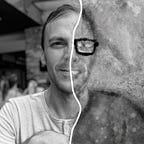Quantum Energy Explained
Demystifying the science of quantum physics
TL;DR
In quantum physics, energy is discrete (chunky).
In classical physics, conforming to our intuitions, energy is continuous, meaning it can change smoothly. Imagine the differences between classical and quantum energy as a slide versus a staircase. Classically, changes in energy can be arbitrarily small. Whereas quantumly, energy only comes in discrete amounts — called quanta, which are also small but ultimately finite.
How did this all come about?
Let’s very briefly play back the tape.
1. Planck’s Quantization of Energy (1900)
In 1900, Max Planck introduced the idea that energy is quantized to solve the blackbody radiation problem. He proposed that energy is emitted or absorbed in discrete units, or quanta, and introduced Planck’s constant.
This was a major theoretical step, but at the time, it was more of a mathematical fix than a fully understood physical principle.
